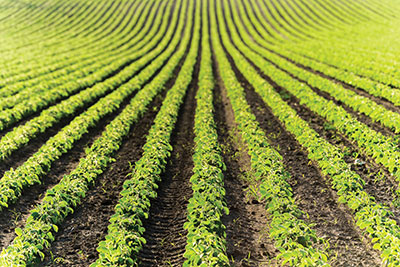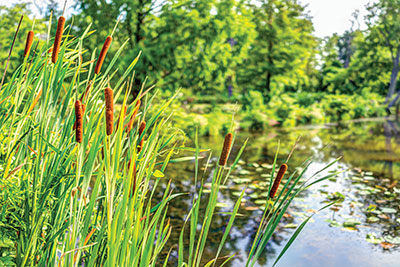




-
What is peat?
Peat is partially decomposed plant matter that accumulates in low-lying depressions due to climatic and chemical conditions.
-
Where do you get your peat?
American Peat Technology’s Aitkin P.E.A.T. Project harvests peat from a prior-converted (disturbed by agricultural use) deposit located about a mile from the Aitkin processing facility in central Minnesota.
-
What is reed-sedge peat? Is that the same as peat moss?
Peat moss is generally understood to be a horticultural product derived from Sphagnum peat. The plant source of Sphagnum peat is a moss and it is generally light in color and fibrous. Reed-sedge peat, as the name implies, is derived from reeds, sedges and grasses. It is generally darker in color and more decomposed.
-
Is peat renewable?
Although APT is harvesting 8 – 12 acres of peat annually at its Aitkin location, the total volume of peat accumulated in the county each year far exceeds the volume of peat harvested by APT.
-
Isn't peat a carbon sink (i.e. are you contributing to global warming by mining peat)?
Peat is classified by the Intergovernmental Panel on Climate Change as “peat”, which recognizes the unique nature of the resource. The life cycles of carbon and greenhouse gases (GHG) such as methane are complex, and although it is generally accepted that peat is a carbon sink, the research indicates that the relationship between sink and source can vary with environmental conditions. As part of our on-going pursuit of permits to harvest peat, APT will be characterizing Aitkin County peat deposits and quantifying their relationship to climate change.
-
How do you ship your products?
We usually ship our products in truckload quantities of 21 super sacks, each weighing 2000 pounds. We can and often do ship less-than-truckload quantities.
-
Does peat become coal?
Not in most instances. Coal forms as a result of peat-like material being subjected to extreme pressure for long periods of time. Most peat deposits are surface accumulations and are not under pressure.
-
What is it made of?
BioAPT is made from natural, locally-source reed-sedge peat. We add a small amount of calcium carbonate (finely ground limestone) to the peat to adjust the pH to near neutral.
-
Is BioAPT a fertilizer?
BioAPT is a carrier, and it can carry microorganisms that enter into symbioses that result in an increase of soil nitrogen. By itself, though, BioAPT is not a fertilizer.
-
What is a microbial carrier?
A microbial carrier is a tool to get beneficial microorganisms to a desired location. For instance, a microbial carrier for legume crops, such as BioAPT, protects and conveys nitrogen-fixing bacteria through the processes of bagging, storage, and delivery into farm fields.
-
What microorganisms can you put on the peat?
The predominant use of BioAPT is to carry nitrogen-fixing bacteria such as Rhizobia. Other plant growth promoting microorganisms such mycorrhizae can also be carried by BioAPT.
-
How do your customers inoculate the peat?
In general, our customers apply a broth containing bacteria onto the peat. They use mixing and cooling equipment to distribute and protect the microbes during inoculation.
-
What is the application rate? Does it raise the organic content of the soil?
The application rate of granular inoculant formulations, such as those that include BioAPT, is usually in the range of 3-7 pounds/acre.
-
What is the shipping moisture content?
The specification for BioAPT at the time of shipping is 9-14 percent moisture.
-
What is the inoculated moisture content?
The final moisture content is at the discretion of the formulator, but it is generally 32-35 percent moisture. BioAPT appears dry and is free-flowing at moisture contents up to about 40 percent.
-
Does it come in other size fractions?
BioAPT is available in granular (0.3 mm – 2 mm) and powdered (less than 0.15 mm) forms.
-
Can it be used with soil or as part of a soil remediation mix?
Yes. BioAPT is an engineered, value-added product, so it would probably be too cost prohibitive for use in soil mixes, but it could be used for soil remediation.
-
What is the bulk density?
The bulk density of granular BioAPT is 41 pounds/ft3 or 0.65 g/cm3.
-
How much metal does it remove?
The removal efficiency of APTsorb and APTIVATOR is subject to the metal, metal concentration, speed of flow and system design. In general, removal efficiencies to below detection limits are possible, and loading capacities in the range of 3-8 mg metal/g media can be expected.
-
How long does it last?
The lifetime of the media depends on the metal concentration and volume of the water being treated. More concentrated solutions and higher volumes of water will result in a shorter media life.
-
How do you use it?
Both APTsorb and APTIVATOR can be used a variety of contactors from pressurized tanks, to gravity-feed vaults, to booms and socks. The primary factors for successful treatment are control over flow rates and good contact between media and water.
-
What is it made of?
Our water treatment products are made from natural, locally-sourced reed-sedge peat. We add a small amount of calcium carbonate (finely ground limestone) to the peat.
-
What are the minimum contact times?
Although we have successfully tested APTsorb with contact times as brief as 18 seconds, we recommend contact times of 3-10 minutes both both APTsorb and APTIVATOR.
-
How do you know it is spent and has to be replaced?
We recommend periodic monitoring of the media or effluent to detect elevations in metals. The media will not fail catastrophically, so replacement can be planned well in advance.
-
What do you do with the spent media?
Disposal of any sorption product is dependent on local regulations and how the media was loaded. We recommend performing a TCLP test (EPA 1311) or total constituent analysis on the media. For most metals, with the exception of lead, under normal loading conditions, we anticipate that the media will pass the TCLP and can be disposed of in a conventional landfill.
-
Will it remove metals such as selenium, arsenic, mercury, phosphorus, nitrates, etc?
APTsorb and APTIVATOR effectively sorb dissolved heavy metals, predominantly those with a +2 valance. They do not remove anions. We are conducting research, however, to synthesize a peat-based media that would target anions and other elements of concern. Those materials are not commercially available at this time.
-
Is it like activated carbon?
Not really. Although peat is high in carbon, our products have not been subjected to the same thermochemical reactions that characterize activated carbon. Additionally, activated carbon is an effective treatment for organics, whereas APTsorb and APTIVATOR are used to remove dissolved metals.
-
What is the difference between APTsorb and APTIVATOR?
APTsorb is a granular crumble that resembles freeze-dried coffee. It is available in one size (0.3 x 1.7 mm) and is an effective treatment for both dissolved heavy metals and suspended solids. APTIVATOR is a spherical media that is available in three different sizes to meet the need for differing permeabilities. It resembles poppy seeds or peppercorns, and is also an effective treatment for heavy metals.
-
Can I use the TurnAbout in applications other than roof runoff?
Absolutely! The TurnAbout can be used in a pump-and-treat system to remove dissolved heavy metals in any application.
